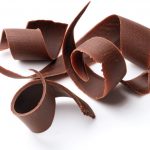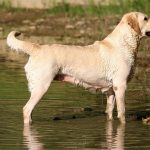
Pets need dental care, too” was the slogan for veterinary health in the late 1990s. At that time, dental care was a relatively new area of focus. Veterinary colleges did not spend much time on small animal dental care except in general terms as related to eruption dates, retained deciduous (baby) teeth, etc. (I had only two, one-hour lectures on the entire subject.)
However, advances in what we know about how dental disease can affect our pet’s health have helped veterinarians and pet owners realize that this is an important area of care for dogs. Especially since 80 percent of dogs and 70 percent of cats show signs of oral disease by age three.
Dentition – the development, number, and arrangement of teeth – has three main components: the tooth itself, the supporting ligaments of the tooth, and the socket of the tooth in the jaw. Each should be taken into consideration and evaluated thoroughly during a dental examination.
Periodontal disease is a broad term for disease of the tooth and the adjacent gum line. Usually the first signs of periodontal disease (PD) are mild: halitosis (bad breath) and a change in coloring of the tooth near the gum line. Early PD is due to an accumulation of bacteria on the teeth and their by-products, which work to cause plaque and tarter accumulation.
As PD progresses, the symptoms will worsen causing the gum line to become inflamed (gingivitis) and recede. When recession of the gum line is extreme, the neck of the tooth root becomes exposed, allowing opportunity for damage to occur. Once the gums become inflamed enough, they may begin to bleed. This breech of the vascular system, with a large accumulation of bacteria close by, can lead to bacteriemia (bacteria in the circulation) and seeding of other organs, such as the liver and kidney, with bacteria.
Once tarter has built up, dental cleaning must be performed to remove it or else the PD, and the damage that it causes, will progress. A proper dental cleaning will require the dog to be under general anesthesia. This can be frightening for some people, but most dogs tolerate it very well. A common misconception is that an older animal is at higher risk during anesthesia. This is not really true since age itself is not a health condition. However, sometimes older animals will have valid health issues that may need to be considered before undertaking anesthesia. A proper health screening is recommended before anesthesia is used, especially with an older pet.
The dental cleaning itself will vary based on the condition of the teeth. Mild build ups of tarter may just require a cleaning and polishing. The polishing helps smooth the surface of the teeth to lower their predisposition to tarter accumulation. Some practices also provide a fluoride treatment at this time. More severe cases may require additional procedures such as stabilization of loose teeth or extractions of broken teeth. If there is gingivitis present, there will usually be some minor oozing of blood during a cleaning that can cause a transient bacteriemia. For this reason, many veterinarians will prescribe antibiotics either before or after dental cleanings and may prefer not to perform other procedures (e.g. spays or neuters) during the same anesthetic event due to the risk of seeding bacteria to the surgical site.
The good news is that most dental problems can be avoided with proper preventative care. The number one thing that can be done at home to prevent dental problems in your dog is to feed a well-balanced diet consisting of 100 percent dry dog food. Yes, our dogs are very good at giving us the sad eyes and wanting that morsel from the table or leftover scraps. However, feeding of scraps and long-term use of canned dog foods are significant factors in the production of dental disease. With every bite of dry food, there is scraping action on the teeth, and the dry particles are much less likely to stick and promote tarter buildup than wet, fatty foods. The use of a diet consisting of dry food only will go a long way to keeping teeth strong and healthy.
However, there are cases in which dry foods are being fed exclusively and there is still a problem. In these cases there are specially formulated foods that are larger in size, forcing more aggressive chewing, and designed to break into small fragments that act to scrape the teeth more aggressively than normal dry food. These foods can be
fed as the sole diet or as treats.
This brings up the next question: What about treats? Improper treats can be just as bad as that meal of “people” food when they become excessive. We all love to give our dogs treats or rewards, so I recommend that you be selective in your choices. Ideally, treats should be hard and crunchy and nutritionally balanced for your dog. If you choose to feed non-commercial treats, give small pieces of fruits and vegetables instead of cooked meats or sweets. There are commercial “dental” treats that can be used, or the tarter control diets make great treats since they are larger than the average kibble and will help keep the tarter off. Just take a few out of the bag and put them in a small container on the counter, and your dog will never know the difference.
Everyone who has had a puppy knows how they love to chew on things. This is not so much a dietary problem, but even some grown dogs have a bad habit of “eating” rocks and other hard objects. This should not be allowed since it may lead to excessive wearing of the teeth, fractures of the teeth, or, even worse, ingestion of the object requiring surgical removal. There are even some products labeled for “dental” use that can be dangerous if your dog is a very aggressive chewer or tends to chew items up into small pieces, so beware.
Some products that can be chewed are rawhides that have been impregnated with enzymes to help reduce plaque and tarter. In cases with significant tarter buildup, they will not remove all the tarter, but they are especially good at keeping teeth clean longer in-between dental cleanings. They are usually easily digestible and rarely cause any problems as long as the appropriate size is used for the dog and they are adequately chewed before swallowing. Bottom line: If it’s not dog food or an approved canine friendly item, keep it out of your dog’s mouth!
Okay, what about cleaning those teeth? Well, we’ve already talked about getting your veterinarian to clean the teeth, but there are things that you can do at home as well. While this may not work when there is a kennel full of dogs, if you only have one or two special partners, there are commercial kits available with toothbrushes and toothpaste that can be used between (and to avoid or delay) cleanings at the vet’s office. Some of these kits have brushes that look just like their human counterparts, and others have brushes that fit on your finger. Pick one you like and that works for you. There is also a variety of toothpaste flavors available. Human toothpaste should be avoided since our pets swallow the foam that is produced.
It is best to start brushing your dog’s teeth as a puppy, but older dogs can be trained to accept the procedure. Once per day is usually adequate to maintain a healthy mouth, but always follow your veterinarian’s advice specifically for your pet.
The foundation of good preventative dental care is always going to be making regular visits to your vet. Be sure that your dog has his/her teeth examined every year during its annual examination. This not only allows your veterinarian to assess the teeth but also the other structures of the mouth. Although the focus of dental care is usually on the teeth themselves, complete evaluation of the oral cavity gives an overall picture of oral health. This includes the teeth, gums, lips, tongue, hard and soft palate, and pharynx. Many times these areas can give clues to problems originating from the dental arcade or other problems such as oral masses or even systemic diseases. Many cases of dental and gingival disease can be avoided with early, appropriate care. Sometimes it may be as simple as using a course of antibiotics to clear up plaque that is starting to build up. Work with your veterinarian and let him/her know how important your dog’s dental health is to you.





